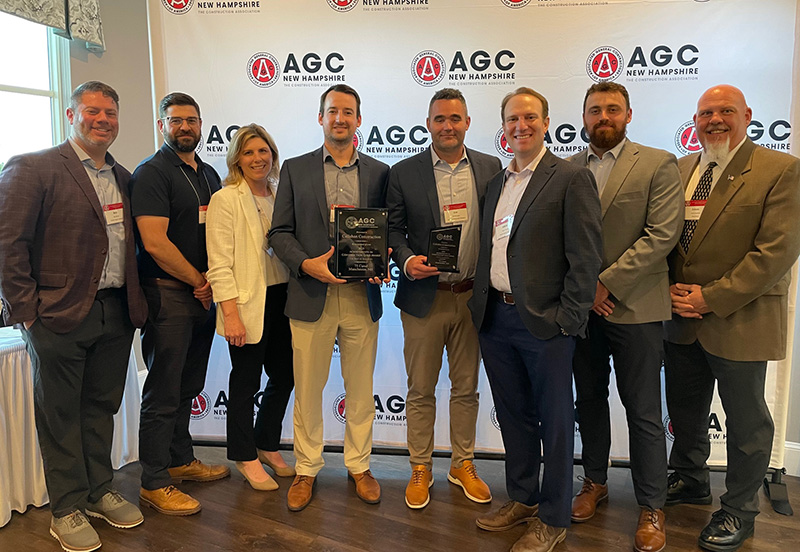News: Construction Design & Engineering
Posted: July 16, 2008
Construction surveying does not only include rolled-up site plans and a transit-level anymore
Construction surveying, also known as construction engineering, has long been a staple of the construction process as well as one of the more visible and exciting applications of surveying. From the first time the Romans used a plumb line and horsehair rope to square up mudbrick walls to today's skyscrapers, someone has to lay it all out, make sure it's square and plumb and otherwise built according to plan. But it is much more than that. We all picture a construction site and a surveyor/engineer standing behind a tripod looking through a scope. But what is he/she doing...exactly?
For a large part of the 20th century, including my own involvement in the early part of my career, a typical construction surveying project, generally involved a project briefing over a small tree worth of plans, arrival at the site, a different briefing from the site superintendent and then lay out the structure. The field surveyor was expected to use the survey instrument, his calculator and his ingenuity to find a starting point and place the blueprinted design on the ground with stakes, nails and plenty of orange paint. From there the bulldozers would dig the holes, the concrete forms would be set, the foundation poured, the steel erected and so on.
Responsibilities included making sure the building perimeter "closed," grades "made sense," stakes were labeled appropriately, etc. Sure, there were additional tasks such as a plot plan, pavement and utility layout, volumes for blasting, etc., but these too, mainly took place in the field with calculations done in the truck or trailer.
Today's surveyor has been heaped with additional responsibilities. Do we have the most recent revisions? Have there been sketches/clarifications/etc. issued? Does the building meet local zoning setback codes? Do the myriad of plans match up and "close?" Is this a building addition that needs to tie in to existing steel? Will the general contractor provide control for his subs or do many trades need additional layout, stakes, chalk lines, offsets, grades and the like? Does the site volume of earth moving agree with the "truck count" of material claimed by the site contractor/blaster? Are column line stakes sufficient or do we need to place the anchor bolt template and then locate its as-built location? Do we need to mark the pile cut-off elevation for pile caps? How about settlement monitoring of adjacent structures? Anyway, you get the picture, a lot to do.
As the construction process unwinds, the surveyor typically needs to be available almost on-call. Machines, trucks, etc. will always run over stakes and they need to be replaced. A contractor may be moving very quickly and need additional layout for the "afternoon pour." Plan revisions get issued throughout the process and new layout is often needed on a moment's notice. We haven't even touched on the complexities of today's zoning, the influx of GPS-automated machine control and of course, the misunderstandings of the CAD or electronic file. Those are topics for a future article.
In any event, today's construction surveyors wear lots of hats and their importance to the construction industry is priceless. If you get a chance, tip your hat to those in the white hardhats!
Wayne Jalbert, PLS is vice president of Hancock Associates, Danvers, Mass.
MORE FROM Construction Design & Engineering
Nobis Group awards Robinson and Moreira STEM scholarships
Concord, NH Nobis Group, a 100% employee-owned consulting firm specializing in engineering and environmental solutions across the Northeast, has named the recipients of its 2025 STEM Scholarship: Andie Moreira of

Quick Hits
Columns and Thought Leadership

Ask the Electrician: Is summer a prime time for commercial electrical maintenance?
The answer is “Yes!” While January marks the official new year, many businesses view September as a fresh start. This makes summer an ideal time for commercial property owners to schedule long-term electrical maintenance projects.

Careers in Construction Month focus on training and safety - by Joe Camilo
October is Careers in Construction Month, and rarely has it been more consequential. According to our chapter’s national parent organization, the construction industry needs to attract half-a-million new workers in the coming year to meet demand. Addressing that need is a huge job, but we at ABC MA are trying to do our part.

The design-build advantage: Integrated interior design solutions - by Parker Snyder
When it comes to corporate interior spaces for both commercial and industrial projects, partnering with a design-build firm with in-house interior design services can offer clients many benefits. Unlike traditional delivery methods where interior designers operate independently from the design and construction teams, often creating a longer project timeline as cost negotiations and revisions ensue

The rise of incubators and co-working spaces: The latest in life sciences - by Matt Combs
In recent years, the life science industry has witnessed a shift in how companies operate and innovate. One of the key driving forces behind this transformation is the emergence of incubators and co-working spaces specifically tailored to meet the unique budget and schedule needs of startups.







.png)